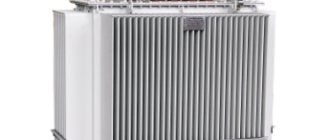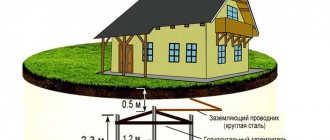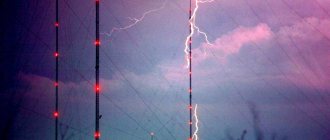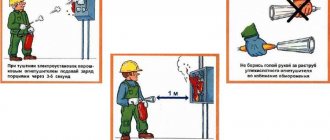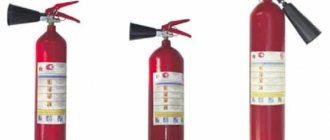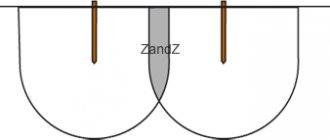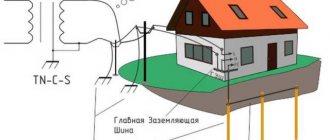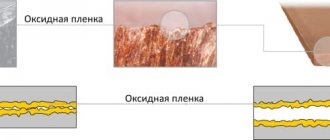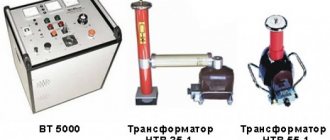Post-war USSR
After a long break, the relevant authorities of the post-war USSR almost immediately began to further regulate standards in the field of production and operation of electrical installations. The forthcoming progress of industry and the increase in production capacity only accelerated the process.
This period has an important feature. At that time, the USSR did not adopt separate laws to control and regulate this industry. Each change in the structure and content of the document was made by orders of individual ministers or resolutions of the entire Council of Ministers.
Initially, the rules for electrical installations were part of the design and construction standards . They were given a separate place in the document under the designations SNiP and SN:
- SN 174-67 Design of power supply for industrial enterprises;
- SN 174-75 Design of power supply for industrial enterprises;
- SN 357-77 Power and lighting electrical equipment of industrial enterprises: design instructions.
- CH 4-57 Section XIII. Electric installation work. Technical conditions for the production and acceptance of construction and installation works.;
- SN 100-60 Section 13. Overhead power lines. Part III. Technical conditions for the production and acceptance of installation and construction works.;
- SN 70-59 Section 13. Cable lines and electrical wiring. Part II Technical conditions for the production and acceptance of construction and installation works;
- SNiP III-I.6-62 Electrical devices. Rules for organizing and conducting work. Transfer into operation;
- SNiP III-I.6-67 Electrical devices. Rules for production and organization of work. Transfer into operation;
- SNiP III-33-76 Electrical devices;
- SNiP 3.05.06-85 Electrical devices.
Departmental standards:
- VSN-342-75 Installation of high-voltage power transformers with voltage up to 110 kV.
- VSN 59-88 Electrical equipment of public and residential buildings.
- SP 31-110-2003 Design and installation of electrical installations in public and residential buildings.
Process design standards:
- ONTP 5-78 Technological design of high voltage substation 35-750 kV;
- RUP-1964 Features and standards for designing installations in rural areas;
- NTPS-67 Technological design of electrical networks and power plants in rural areas;
- NTPS-88 Technological design of electrical networks for agricultural purposes;
- NTPD-90 Technological design of diesel power plants;
- VNTP-81 Technological design of thermal power plants;
- Technological design of points and units for the work of dispatchers of SDTU power systems.
individual publications of the PUE were also actively published and supplemented with the development of the industrial sector:
- PUE - 1st edition . Rules for the construction of electrical installations. For three years (from 1946 to 1949) it was published in the form of separate small brochures. In 1949, it was decided to combine these brochures and publish them in a single publication. Additional section changes were issued separately in 1950.
- PUE - 2nd edition . It was released in 1950 without significant changes in content. The appearance of the brochure has been greatly changed. In 1952, an additional section entitled “Electric Welding” was published.
- PUE - 3rd edition . Issued in separate sections starting in 1957. The entire book was completed only in 1964.
- PUE - 4 editions . In 1965, the fourth edition was released in its entirety, which was essentially the third with minimal changes.
- PUE - 5th edition . Separate issues began to be published in 1976. The final one was released in 1982.
- PUE - 6th edition . The development was carried out by the Ministry of Energy of the Soviet Union itself. The fully finished version went into use in the summer of 1985. In the fall, an important change was made, but they did not make another reissue, canceling the effect of a specific controversial paragraph.
Russian Federation
It is easy to guess that at the end of the 80s and after the collapse of the USSR, no significant changes were made to the PUE for obvious reasons. At the same time, the existing set of rules was more than enough and they did not lose their legal force. In 1994, the rules for electrical installations corresponded to the Gosstandart of Russia and Gosenergonadzor. In 1995, the PUE was approved by the Ministry of Fuel and Energy and became part of departmental regulatory documents. As a result, new changes began to be made to the document on behalf of this organization in 1997 and 1998.
Since 2000, the first serious changes since 1985 have been introduced into the PUE. The sections “Electrical lighting” and “Electrical equipment of special installations” are added. In 2003, the last major changes were introduced: sections “General Rules”, “Electricity Transmission”, “Switchgears and Substations” appeared.
With the departure of the USSR, important changes occurred in the legal component of the process. According to the constitution, federal electrical installations became the responsibility of the Russian Federation. As a result, starting from 2003, all existing standards must comply with the legislation of the Russian Federation. Individually issued regulations have a direct impact on existing reliability and safety requirements. Since 2016, regulatory and legal acts have put forward requirements for all sectors of the electric power industry: electrical installations, power lines, industrial facilities, residential premises, training of personnel and specialists to service all electrical systems.
As for the PUE, today the 6th and 7th editions with the latest amendments are relevant in the Russian Federation. Their use is fully consistent with existing regulations. The content includes rules based on centuries of experience in the development of electrical installations, including the latest developments, technologies and optimal solutions. Strict adherence to these standards guarantees safety and high efficiency of the technology.
Where the Rules for the Construction of Electrical Installations, PUE, apply
Many people call the PUE the reference book for all electricians. This is actually true, but not entirely. The PUE book has limited validity and cannot, of course, be used for all electrical installations.
The PUE is valid for electrical installations whose voltage does not exceed 750 kV.
The PUE applies to newly constructed electrical installations, as well as to electrical installations undergoing reconstruction. Moreover, if the reconstruction takes place in part of the building (electrical installation), and the second part is in normal operation, the PUE applies only to the reconstructed part.
Some clarification is required here. In the PUE book, and in all regulatory documents, electrical installations refer to lines, devices, machines, together with their installation premises, intended for all stages of the production and use of electrical energy.
In practice, there are practically no high-voltage power lines above 750 kV in the Russian and post-Soviet space. Moreover, even overhead lines above 500 kV are rare.
Therefore, in practice, the rules of the PUE can be applied to all designed, constructed and reconstructed electrical installations.
Rules for the construction of electrical installations (PUE). Chapter 1.1 General part (Seventh Edition)
RULES FOR ELECTRICAL INSTALLATIONS Seventh edition Section 1 GENERAL RULES Chapter 1.1 GENERAL PART
Date of introduction 2003-01-01
Preface
DEVELOPED taking into account the requirements of state standards, building codes and regulations, recommendations of scientific and technical councils for reviewing draft chapters. The draft chapters were reviewed by the working groups of the Coordination Council for the revision of the EMP.
PREPARED BY JSC VNIIE.
AGREED in accordance with the established procedure with the Gosstroy of Russia, Gosgortekhnadzor of Russia, RAO UES of Russia (JSC VNIIE) and submitted for approval by Gosenergonadzor of the Ministry of Energy of Russia.
APPROVED by the Ministry of Energy of the Russian Federation, order dated July 8, 2002 N 204.
Chapter 1.1 of the Sixth Edition of the Electrical Installation Rules becomes invalid as of January 1, 2003.
“Rules for the construction of electrical installations” (PUE) of the seventh edition, due to the long period of processing, are issued and put into effect in separate sections and chapters as work on their revision, coordination and approval is completed.
The requirements of the Electrical Installation Rules are mandatory for all organizations, regardless of ownership and organizational and legal forms, as well as for individuals engaged in entrepreneurial activities without forming a legal entity.
Application area. Definitions
1.1.1. The Rules for the Construction of Electrical Installations (PUE) apply to newly constructed and reconstructed electrical installations of direct and alternating current with voltage up to 750 kV, including special electrical installations discussed in Section 7 of these Rules.
The construction of special electrical installations not discussed in Section 7 must be regulated by other regulatory documents. Separate requirements of these Rules may be applied to such electrical installations to the extent that they are similar in design and operating conditions to the electrical installations discussed in these Rules.
The requirements of these Rules are recommended to be applied to existing electrical installations if this increases the reliability of the electrical installation or if its modernization is aimed at ensuring safety requirements.
In relation to reconstructed electrical installations, the requirements of these Rules apply only to the reconstructed part of the electrical installations.
1.1.2. PUEs are developed taking into account the obligatory conduct of scheduled preventive and maintenance tests, repairs of electrical installations and their electrical equipment under operating conditions.
1.1.3. An electrical installation is a set of machines, apparatus, lines and auxiliary equipment (together with the structures and premises in which they are installed) intended for the production, transformation, transformation, transmission, distribution of electrical energy and its conversion into other types of energy.
1.1.4. Open or outdoor electrical installations are electrical installations that are not protected by the building from atmospheric influences.
Electrical installations protected only by canopies, mesh fences, etc. are considered external.
Closed or internal electrical installations are electrical installations located inside a building that protects them from atmospheric influences.
1.1.5. Electrical rooms are rooms or fenced off (for example, nets) parts of the room in which electrical equipment is located, accessible only to qualified service personnel.
1.1.6. Dry rooms are rooms in which the relative air humidity does not exceed 60%.
If the conditions specified in 1.1.10-1.1.12 are absent in such premises, they are called normal.
1.1.7. Wet rooms are rooms in which the relative air humidity is more than 60%, but does not exceed 75%.
1.1.8. Damp rooms are rooms in which the relative air humidity exceeds 75%.
1.1.9. Particularly damp rooms are rooms in which the relative air humidity is close to 100% (the ceiling, walls, floor and objects in the room are covered with moisture).
1.1.10. Hot rooms are rooms in which, under the influence of various thermal radiation, the temperature constantly or periodically (more than 1 day) exceeds +35 ° C (for example, rooms with dryers, kilns, boiler rooms).
1.1.11. Dusty rooms are rooms in which, due to production conditions, process dust is released, which can settle on live parts and penetrate into machines, devices, etc.
Dusty rooms are divided into rooms with conductive dust and rooms with non-conductive dust.
1.1.12. Rooms with a chemically active or organic environment are rooms in which aggressive vapors, gases, liquids are constantly or for a long time contained, deposits or mold are formed that destroy the insulation and live parts of electrical equipment.
1.1.13. With regard to the danger of electric shock to people, the following are distinguished:
1) premises without increased danger, in which there are no conditions that create increased or special danger (see paragraphs 2 and 3);
2) premises with increased danger, characterized by the presence of one of the following conditions creating increased danger:
dampness or conductive dust (see 1.1.8 and 1.1.11);
conductive floors (metal, earthen, reinforced concrete, brick, etc.);
high temperature (see 1.1.10);
the possibility of simultaneous human contact with metal structures of buildings connected to the ground, technological devices, mechanisms, etc., on the one hand, and with metal casings of electrical equipment (exposed conductive parts), on the other;
3) especially dangerous premises, characterized by the presence of one of the following conditions creating a special danger:
special dampness (see 1.1.9);
chemically active or organic medium (see 1.1.12);
simultaneously two or more conditions of increased danger (see 1.1.13, clause 2);
4) the territory of open electrical installations in relation to the danger of electric shock to people is equated to especially dangerous premises.
1.1.14. Qualified service personnel are specially trained workers who have passed a knowledge test to the extent required for this job (position), and have an electrical safety group provided for by the current labor protection rules when operating electrical installations.
1.1.15. The nominal value of a parameter is the value of a parameter of an electrical device specified by the manufacturer.
1.1.16. AC voltage is the effective value of voltage.
DC voltage - direct current voltage or rectified current voltage with a ripple content of no more than 10% of the effective value.
1.1.17. To indicate the mandatory compliance with the requirements of the PUE, the words “must”, “should”, “necessary” and derivatives from them are used. The words “as a rule” mean that this requirement is predominant, and deviation from it must be justified. The word “allowed” means that this decision is applied as an exception as forced (due to cramped conditions, limited resources of necessary equipment, materials, etc.). The word “recommended” means that this solution is one of the best, but not required. The word “may” means that the decision is lawful.
1.1.18. The standardized values of quantities accepted in the PUE with the indication “not less” are the smallest, and those with the indication “no more” are the greatest.
All values of quantities given in the Rules with the prepositions “from” and “to” should be understood as “inclusive”.
General instructions for electrical installations
1.1.19. Electrical equipment, electrical products and materials used in electrical installations must comply with the requirements of state standards or technical specifications approved in the prescribed manner.
1.1.20. The design, design, installation method, class and insulation characteristics of the machines, devices, instruments and other electrical equipment used, as well as cables and wires, must comply with the parameters of the network or electrical installation, operating modes, environmental conditions and the requirements of the relevant chapters of the PUE.
1.1.21. Electrical installations and associated structures must be resistant to or protected from environmental influences.
1.1.22. The construction and sanitary parts of electrical installations (the design of the building and its elements, heating, ventilation, water supply, etc.) must be carried out in accordance with the current building codes and regulations (SNiP) with the obligatory fulfillment of additional requirements given in the PUE.
1.1.23. Electrical installations must meet the requirements of current regulatory documents on environmental protection regarding permissible levels of noise, vibration, electric and magnetic field strengths, and electromagnetic compatibility.
1.1.24. To protect against the influence of electrical installations, measures must be taken in accordance with the requirements of the standards for permissible industrial radio interference and the rules for protecting communication devices, railway signaling and telemechanics from the dangerous and interfering influence of power lines.
1.1.25. Electrical installations must provide for the collection and disposal of waste: chemicals, oil, garbage, process water, etc. In accordance with current environmental protection requirements, the possibility of the specified waste entering water bodies, storm water drainage systems, ravines, as well as areas not intended for storing such waste must be excluded.
1.1.26. The design and selection of circuits, layouts and structures of electrical installations should be made on the basis of technical and economic comparisons of options, taking into account the requirements for ensuring the safety of service, the use of reliable schemes, the introduction of new equipment, energy and resource-saving technologies, and operating experience.
1.1.27. If there is a risk of electrical corrosion or soil corrosion, appropriate measures must be taken to protect structures, equipment, pipelines and other underground communications.
1.1.28. In electrical installations, it must be possible to easily recognize parts belonging to individual elements (simplicity and clarity of diagrams, proper arrangement of electrical equipment, inscriptions, markings, colors).
1.1.29. For color and digital designation of individual insulated or non-insulated conductors, colors and numbers must be used in accordance with GOST R 50462 “Identification of conductors by colors or digital designations”.
Protective grounding conductors in all electrical installations, as well as neutral protective conductors in electrical installations with voltages up to 1 kV with a solidly grounded neutral, incl. tires must have a letter designation and color designation with alternating longitudinal or transverse stripes of the same width (for tires from 15 to 100 mm) of yellow and green colors.
Zero working (neutral) conductors are indicated by a letter and a blue color. Combined neutral protective and neutral working conductors must have a letter designation and color designation: blue along the entire length and yellow-green stripes at the ends.
1.1.30. The alphanumeric and color designations of tires of the same name in each electrical installation must be the same.
Tires must be marked:
1) with three-phase alternating current: phase buses - yellow, phases - green, phases - red;
2) with single-phase alternating current, the bus connected to the end of the power source winding is in red, the bus connected to the beginning of the power source winding is yellow.
Single-phase current buses, if they are a branch from the buses of a three-phase system, are designated as the corresponding three-phase current buses;
3) at constant current: positive bus (+) - in red, negative (-) - in blue and zero working - in blue.
The color coding must be carried out along the entire length of the tires if it is also provided for more intensive cooling or anti-corrosion protection.
It is allowed to carry out a color designation not along the entire length of the busbars, only a color or only an alphanumeric designation, or a color in combination with an alphanumeric designation at the points where the busbars are connected. If non-insulated busbars are not accessible for inspection during the period when they are energized, then they may not be marked. At the same time, the level of safety and visibility when servicing the electrical installation should not be reduced.
1.1.31. When busbars are located “flat” or “edge-on” in switchgears (except for complete prefabricated single-sided service cells (KSO) and complete switchgears (SGD) 6-10 kV, as well as factory-made panels 0.4-0.69 kV) The following conditions must be met:
1. In switchgears with a voltage of 6-220 kV with alternating three-phase current, prefabricated and bypass busbars, as well as all types of sectional busbars, should be located:
a) in a horizontal position:
one under the other: from top to bottom;
one after another, obliquely or in a triangle: the most distant bus, the middle one -, the closest to the service corridor -;
b) with a vertical arrangement (in one plane or in a triangle):
from left to right or the most distant bus, middle -, closest to the service corridor -;
c) branches from busbars, if you look at the busbars from the service corridor (if there are three corridors - from the central one):
when positioned horizontally: from left to right;
in a vertical position (in one plane or in a triangle): from top to bottom
z.
2. In five- and four-wire three-phase alternating current circuits in electrical installations with voltages up to 1 kV, the arrangement of busbars should be as follows:
when positioned horizontally:
one below the other: top to bottom ();
one after another: the most distant bus, then the phases closest to the service corridor - ();
with a vertical arrangement: from left to right () or the most distant bus, then the phases closest to the service corridor - ();
branches from busbars, if you look at the busbars from the service corridor:
when positioned horizontally: from left to right ();
with a vertical arrangement: () st
erhu down.
3. With direct current, the buses should be located:
busbars in a vertical arrangement: top, middle (-), bottom (+);
busbars with horizontal arrangement:
most distant, middle (-) and closest (+), when looking at the tires from the service corridor;
branches from busbars: left bus, middle (-), right (+), if you look at the buses from the service corridor.
In some cases, deviations from the requirements given in paragraphs 1-3 are allowed if their implementation is associated with a significant complication of electrical installations (for example, it necessitates the installation of special supports near the substation for the transposition of overhead power line wires - overhead lines) or if the substation uses two or more than a stage of transformation.
1.1.32. Electrical installations, according to electrical safety conditions, are divided into electrical installations with voltage up to 1 kV and electrical installations with voltage above 1 kV (according to the effective voltage value).
The safety of operating personnel and unauthorized persons must be ensured by implementing the protective measures provided for in Chapter 1.7, as well as the following measures:
maintaining appropriate distances to live parts or by closing or fencing live parts;
use of device locking and fencing devices to prevent erroneous operations and access to live parts;
use of warning alarms, signs and posters;
the use of devices to reduce the strength of electric and magnetic fields to acceptable values;
the use of protective equipment and devices, including for protection from the effects of electric and magnetic fields in electrical installations in which their intensity exceeds permissible standards.
1.1.33. In electrical premises with installations with voltages up to 1 kV, the use of non-insulated and insulated live parts without contact protection is allowed, if, according to local conditions, such protection is not necessary for any other purposes (for example, for protection from mechanical influences). In this case, parts accessible to touch must be located so that normal maintenance does not involve the danger of touching them.
1.1.34. In residential, public and other premises, devices for fencing and closing live parts must be solid; in areas accessible only to qualified personnel, these devices can be solid, mesh or perforated.
Fencing and closing devices must be made in such a way that they can only be removed or opened using keys or tools.
1.1.35. All enclosing and closing devices must have the required (depending on local conditions) mechanical strength. At voltages above 1 kV, the thickness of metal enclosing and closing devices must be at least 1 mm.
1.1.36. To protect service personnel from electric shock, electric arc, etc. all electrical installations must be equipped with protective equipment, as well as first aid equipment in accordance with the current rules for the use and testing of protective equipment used in electrical installations.
1.1.37. Fire and explosion safety of electrical installations must be ensured by meeting the requirements given in the relevant chapters of these Rules.
Upon commissioning, electrical installations must be equipped with fire-fighting equipment and equipment in accordance with current regulations.
1.1.38. Newly constructed and reconstructed electrical installations and electrical equipment installed in them must be subjected to acceptance tests.
1.1.39. Newly constructed and reconstructed electrical installations are put into commercial operation only after they have been accepted in accordance with the current regulations.
The text of the document is verified according to: standard production publication M.: Publishing House NC ENAS, 2002
